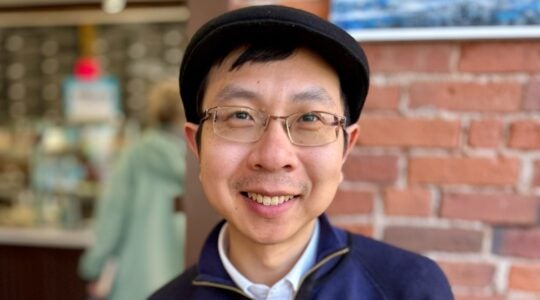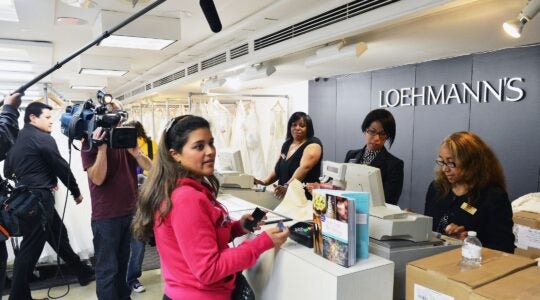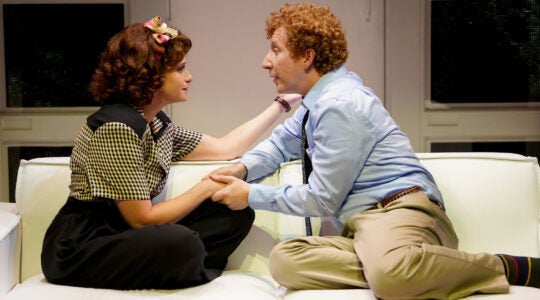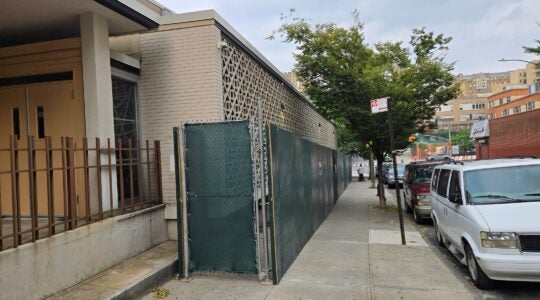When I am asked about my least favorite airport, I never hesitate. While my relationship with JFK, my home base, is of the love-hate variety, there is no airport I loathe the way I loathe Frankfurt.
And yet I enjoy the city. Unlike most international travelers, who tend to view Frankfurt the way New Yorkers view the Time Square shuttle, I have actually made the effort to get out of that sprawling German air hub and explore the energetic metropolis that surrounds it.
Oh, OK, I haven’t really made the effort. I’ve actually been stranded in Frankfurt on numerous occasions, so no initiative was necessary on my part. Nevertheless, I am always pleasantly surprised at all the history and attractions that Frankfurt, located in the German state of Hessen, has to offer — especially its Jewish heritage, which is intimately connected to its status as the Continent’s financial capital. (The banking city is distinguished from its edible homonym by the addendum “am Main,” though apart from train schedules, you’ll rarely see all three words.)
Indeed, a tour of Frankfurt’s leading Jewish attractions reveals that this city of bankers is also, in no small part, a city of prominent Jewish bankers — most prominent among them Mayer Carl von Rothschild, a member of of the illustrious family whose 19th-century villa, known as the Rothschild Palace, now houses part of the Jewish Museum Frankfurt am Main. Germany’s fourth-largest Jewish community has been fortified over the years with newcomers drawn to the financial industry here.
Today the city is presided over by a Jewish mayor, Peter Feldmann. And it has been the site of pro-Jewish demonstrations organized in response to a rash of anti-Semitic incidents throughout Germany (and Europe); a recent event drew a reported 3,500 to protest anti-Semitism, including a visible effort by the Kurdish-Israeli Friendship Society — evidence of the both the city’s pragmatic pluralism and its thriving immigrant cultures.
Those cultures have a long, turbulent history in this ancient town — a history vividly on display at the Jewish Museum, which presents nearly a millennium of Frankfurt Jewish life in two white neoclassical buildings on the banks of the Main River. With substantial archives, libraries, education and media centers in addition to an impressive collection of cultural artifacts and important Jewish art, the museum opened on the 50th anniversary of Kristallnacht in 1988.
Few of the lavish 19th-century Rothschild interiors remain intact, but several are preserved inside Mayer Carl’s villa; they include his smoking salon, a mirrored stairway inlaid with multicolored marble, and a white-and-gold music room. All flaunt the fluted columns and Rococo touches favored by the Francophile elite.
For me, a particular highlight of the museum is the collection of paintings and other works by German-Jewish artists who are not well known in the U.S., but whose lives and careers reflect the fascinating vicissitudes of German-Jewish fortune. These include works by Eduard Bendemann, son of a 19th-century banker, and Jacob Steinhardt, who emigrated to Palestine in the 1930s, founded one of Jerusalem’s early art academies and became known for his Jewish and biblical themes. Steinhardt’s iconic woodcuts, together with the etchings of Berlin-Jewish artist and fellow Israeli émigré, Hermann Struck, are the focus of a current exhibition at the museum.
You can also see paintings and theatrical settings by Henry Gowa, a German stage designer and artist. Gowa escaped the Holocaust in France, where he was heavily influenced by French aesthetic culture, became an intimate of Marc Chagall and other heavyweights, and returned to become a leading figure in the postwar art scene in Germany, where he maintained ties to French culture.
Many Jewish families, including those in the banking industry, had historical roots in the Judengasse — Frankfurt’s historic Jewish ghetto, which lasted the 15th through the 18th centuries. Pedestrians scurrying through an ugly modern intersection might never suspect that the grim brick façade of the Museum Judengasse today rests on the foundations of Jewish houses from that era.
The museum has been closed for renovation and will reopen later this year with a new permanent exhibition documenting the history of that community — including the original walls from an ancient German synagogue.
Meanwhile, Frankfurt’s leading institution for Holocaust research, the Fritz Bauer Institute, has a new home on the campus of Goethe University, on the green northern fringe of the center city. Named for the Jewish lawyer (and later attorney general for Hessen) who was a leading figure in both the Frankfurt Auschwitz trials and the capture of Adolf Eichmann, the Institute hosts frequent lectures, exhibitions and events exploring the blackest of German chapters.
It’s a reminder that the workaday bustle of dark-suited bankers in this consummately modern city has a venerable, complicated Jewish past — a past worth exploring just outside Europe’s most exasperating airport.
The New York Jewish Week brings you the stories behind the headlines, keeping you connected to Jewish life in New York. Help sustain the reporting you trust by donating today.




